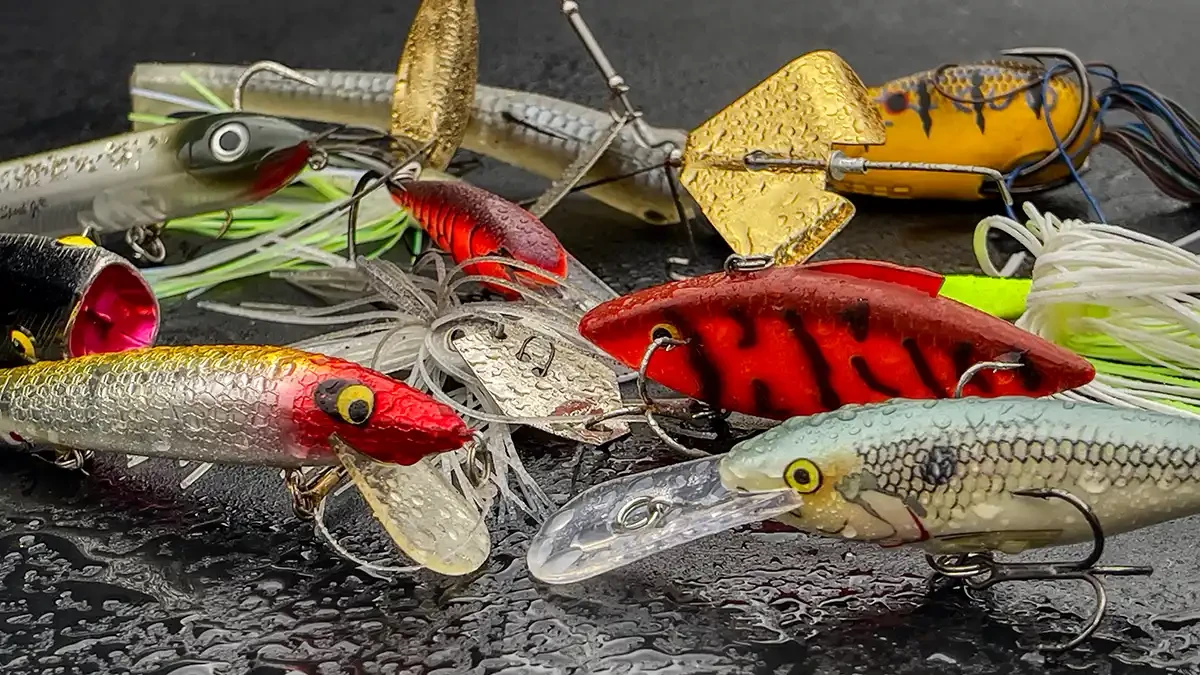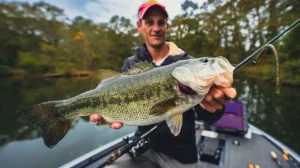There are thousands of lures for bass fishing now, but at one point, each of the different bait categories we have to choose from today started with an original design, the first in the category. And those originals not only were some of the best fish catchers in their own right and still are today, but they spawned a plethora of other other baits similar in action and even at times improving on the original idea. Some of these best bass fishing lures are not as common anymore and they have been replaced by newer staples in the category.
Knowing each of the categories of best bass lures, however, is pivotal as an angler. And knowing the best staples in that category can also increase the likelihood of success while fishing.
If you’re new to bass fishing or just need a refresher about the best bass fishing lures ever made, this will help. We have reviewed a ton of baits in these various categories that we put our stamp of approval on. If we’ve reviewed it, then it passed our tests for being worthy of an angler’s money. We don’t write reviews on the products that are below our standards. And after reviewing tens of thousands of products, and spending thousands of hours on the water testing lures, we’ve got a pretty keen eye for what is legit and not now.
This guide will show not only the best bass lures of all time, but also we’ll share reviews of some of our newer favorites in these categories where appropriate as well as links on where to find these best bass fishing lures. Our goal is to share as many of the good bass lures we know about to help you catch more fish. We will constantly update this as we go to include some of the new things that become staple fish catchers.
Wired2Fish’s All-Time Favorite Bass Lures:
- Swimbait: The Basstrix Paddle Tail – Buy from Tackle Warehouse
- Vibrating Jig: Z-Man Chatterbait – Buy from Bass Pro
- Topwater: Heddon Zara Spook – Buy from Bass Pro
- Soft Stick Bait: Yamamoto Senko – Buy from Bass Pro
- Ned Rig: Z-Man TRD – Buy from Bass Pro
- Drop Shot Worm: Roboworm Straight Worm – Buy from Bass Pro
- Spinnerbait: Zorro Aggitator Spinnerbait – Buy from Tackle Warehouse
- Plastic Worm: Zoom Ol’ Monster – Buy from Tackle Warehouse
- Hollow Frog: Snagproof Frog – Buy from Amazon
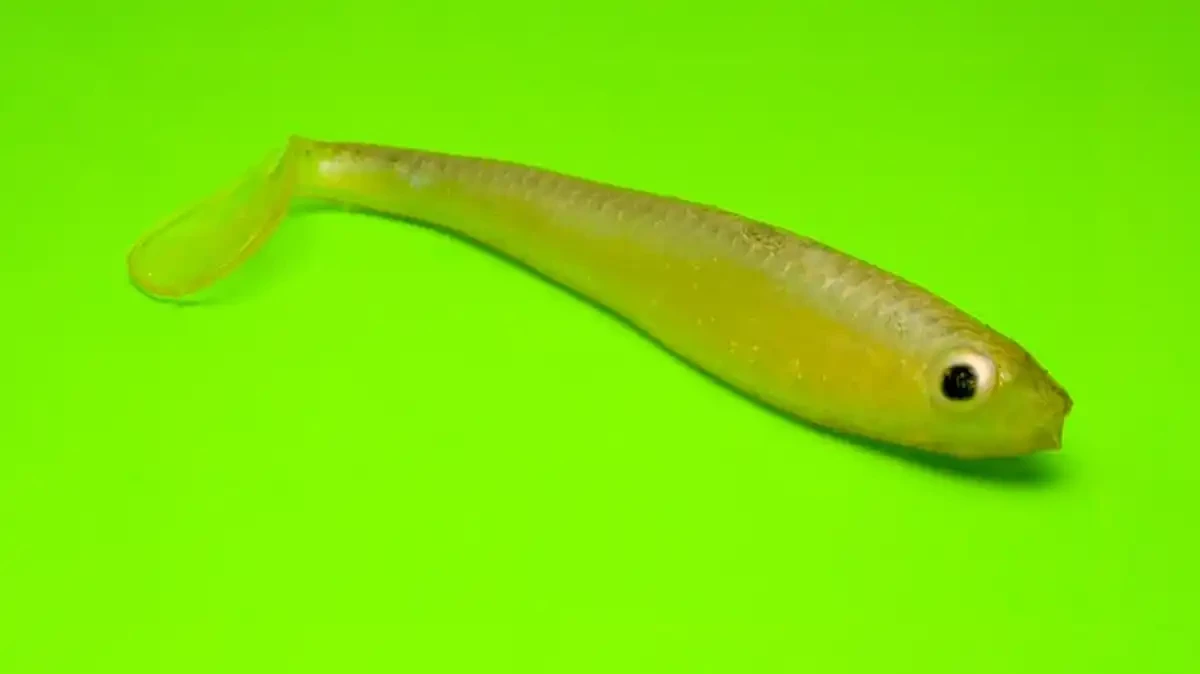
Swimbait: The Basstrix Paddle Tail
The Basstrix Paddle Tail swimbait was definitely not the first swimbait made or even the first lure to incorporate a paddle tail. However the size and dual pour plastic bodies created a buzz in the angling community. But its influence was two fold.
After some major tournaments were won on the Basstrix swimbaits, the demand went through the roof, more than the manufacturer could manage in fact. That lead to an enormous influx of imitations from other manufacturers looking to fill the void with consumers demanding these hand-poured swimbaits.
But it also had a lasting effect in that it brought western swimbaits to the whole country, and anglers began to incorporate swimbaits in their regular fishing arsenal. Of course many of the purist swimbait sticks out west scoffed at the popularity of these swimbaits as they were hucking huge Huddleston Trouts and 10-inch Ospreys on extra heavy tackle and catching monster bass.
But the Basstrix “bridged the gap” so to speak between the big-swimbait, big-bass guys and the common everyday angler who throws more realistic sizes when chasing bass with artificials. Bass will eat those bigger baits, but more bass seemed to readily scarf the 5-inch Basstrix Paddle Tail Swimbaits across the nation.
Basstrix is back again with new ownership and pumping out new designs, even branching into crappie fishing and BFS. So the main contributor to the growth of swimbait fishing is back providing one of the all time great swimbaits to anglers.
Rig it on a weedless weighted EWG Swimbait hook or on a jighead and it’s deadly when cast out and fished much like a spinnerbait but on a slow steady retrieve. Bites will just feel like added weight on the rod most of the time although the guide-slapping strikes happen with the Basstrix paddle tail as well.
READ NEXT: Basstrix Paddle Tail Swimbait Review
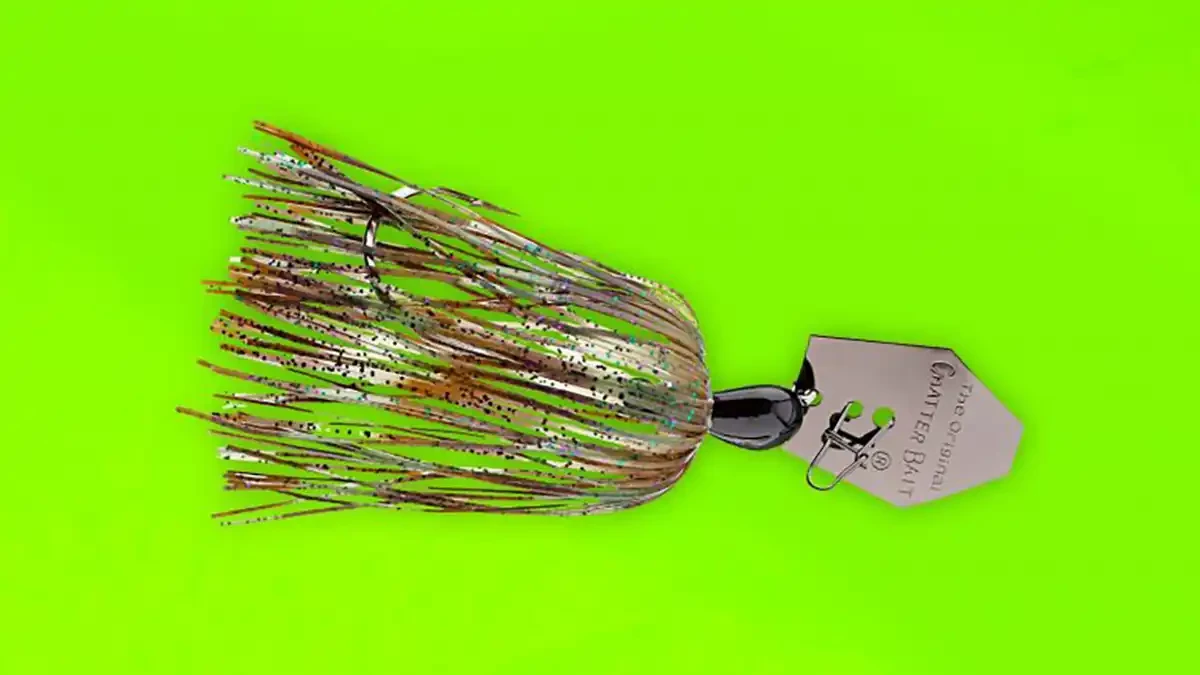
Vibrating Jig: Rad Lures Chatterbait
The ChatterBait bladed jig was created in a garage in Greenwood, S. C. by father-son team Ronny and Ron Davis after years of tinkering with the goal of creating a bait with the profile of a jig, the flash of a spinnerbait and the vibration of a crankbait.
Convincing the angling public of the virtues of this new style lure was not easy when the bait hit the market with Rad Lures in 2004. In January of 2006, Bryan Thrift won a Stren Series event on Lake Okeechobee using the ChatterBait. Immediately, demand for vibrating jigs went through the roof virtually overnight, and the ChatterBait craze was born.
I was down in Florida when all that happened and it was crazy how thousands of those baits were scarfed up in a matter of hours after Thrift’s win.
Since then, the ChatterBait has gone on to win dozens if not hundreds of bass fishing tournaments all across the country and was sold to Z-Man. We consider it a finesse version of crankbait that can be fished through grass. It excels in cold and hot water alike, can mimic baitfish or bluegill and catch bass in a variety of water clarities and conditions.
It has become one of the most versatile lures for bass fishing.
Check Out More Chatterbait Reviews:
- Z-Man Original Chatterbait
- Z-Man Mini-Max Chatterbait
- Z-Man Project Z Chatterbait
- Z-Man Evergreen Jack Hammer Chatterbait
- Z-Man Willow Vibe Chatterbait
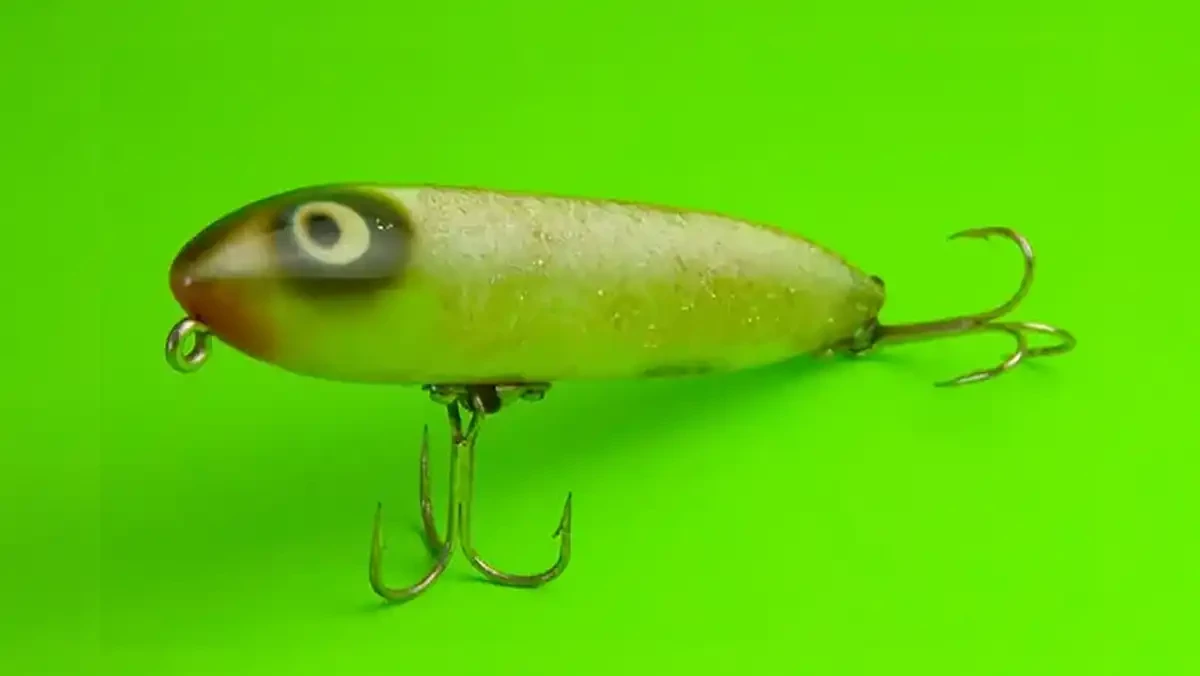
Walking Topwater: Heddon Zara Spook
The Heddon Zara Spook spawned not only a craze of topwater anglers and savage heart stopping strikes from hungry bass, but it spawned it’s own swagger on the water. The “walk the dog” technique was born with the creation and perfection of this lure, and it was an overnight success.
I can remember seeing Charlie Campbell for the first time on television making this topwater bait zig zag back and forth across the surface, even walking it around a stump before a big bass jumped out of the water to bite it. I was hooked from that moment. Now I can’t have enough Zara Spooks or their later imitators in the boat when the water is warm and bass chase forage. They are one of the best lures for largemouth bass as well as smallmouth and spots.
The walk the dog technique became not only an effective way to catch bass, but also search for bass during the warm months in tournament situations. It seemed to call bass from great distances and a lot of times you could get bass to show themselves without ever having to hook them by taking the hooks off the bait.
The original version had hook hangers screwed on the outside of the bait and was silent with a handful of colors. Now there are a multitude of sizes, colors, rattle options, silent options, three hook and two hook varieties and more. Their popularity remains strong to this day.
READ NEXT: The Best Topwater Lures of All Time

Soft Stickbait: Yamamoto Senko
Around these parts, we call the Yamamoto Senko the “stupid bait” because you could be the worst fisherman in the world and throw the Senko up in the vicinity of a bass and catch it. The action and “do-nothing” appeal make this a top bass catcher from spring to fall all over the country.
But it’s appeal is not just how well it catches bass without having to impart action, but the fact that it catches big bass equally well, especially bedding bass.
Rumor has it that Gary Yamamoto wanted to make a Slug-Go type lure and poured a mold from a Cross Pen to create a new shape. After some refinement, he figured out that jerking a soft plastic was not the biggest appeal but rather a wiggling action on the fall. He also really pioneered weighting plastics to make them more dense and fall more readily.

Ned Rig: Z-Man TRD
The Midwest finesse fishing pioneer Ned Kehde spent years cutting up and modifying ElaZtech baits to create a small softbait that would entice strikes from heavily-pressured bass in public reservoirs in Kansas.
After introducing his friend Drew Reese, a fishing industry veteran and competitor in the first Bassmaster Classic to the virtues of ElaZtech, Reese convinced Z-Man Fishing Products to manufacture Kehde’s creation, which became the 2 3/4-inch Finesse TRD and brought the ‘Ned Rig’ to the mainstream.
Years later, the Z-Man Finesse TRD is one of the top selling soft plastic baits nationwide and a lure that both recreational and tournament anglers rely on to get bites in the toughest conditions.

Drop Shot Worm: Roboworm Straight Worm
This do-nothing worm was not a new shape or creation per se, but the massive impact Roboworm’s Straight Tail worm had on the technique of drop-shotting and bringing the drop shot technique to the mainstream from coast to coast cannot be ignored.
A pink color they created called Morning Dawn turned out to be as popular as the Roboworm itself was. That color has gone on to be arguably the best fishing catching color of all time on a drop shot and has spawned a whole drop shot niche thanks to the ease of use and large volume of fish you catch on the worm.

Spinnerbait: Zorro Aggitator spinnerbait
This bait wasn’t really an agitator, but it did seem to provoke the bass into biting. Especially well for anglers in the very first Bassmaster Classic. Originally called the Agitator, the Stan Sloan’s Zorro Baits Aggravator is a spinnerbait that wasn’t necessarily the first spinnerbait ever made, but it vaulted spinnerbaits into the mainstream when Bobby Murray and Roland Martin used the baits to finish first and second at Ray Scott’s inaugural Bassmaster Classic.
The longer than seen before arm made the spinnerbait extremely snag proof and anglers were able to work the spinnerbaits in and around cover, making a new presentation for bass fisherman that it still extremely effective today. This reaction bite over cover was impactful on anglers from coast to coast.
Sure there were other spinnerbaits out there but this one had Stan Sloan’s name behind it as he was the angler who won Ray Scott’s very first bass fishing tournament. It also then had the first Classic victory behind it and it’s still argued to be one of the baits that really started the niche of competitive angling being an extremely effective marketing mechanism for fishing tackle.
Regardless of all that, the bait is still being manufacture and sells extremely well and most around these parts (Kentucky/Tennessee) would consider the Short Arm Aggravator as THE choice for night time spinnerbait fishing.
Check Out More Spinnerbait Reviews:
- Shimano Swagy Strong Tandem
- Strike King Tour Grade Double Willow
- Jewel Jolt Nightime Spinnerbait
- Advantage Double Willow Spinnerbait
- Damiki MTS Spinnerbait
- Strike King Lil Money Spinnerbait
- Nichols Metal Flake Spinnerbait
- Booyah Blade Spinnerbait
- Nichols Elite Lo-Pro Spinnerbait
- Z-Man SlingBladeZ Spinnerbait
- Terminator P1 Pro Spinnerbait

Big Plastic Worm: Zoom Ol’ Monster
While the Zoom Ol’ Monster was certainly not the first of the big worms with Mann’s Jelly Worms being introduced in 1967 and worms like the Baby Huey were staples before the Zoom Ol’ Monster was created, it’s still one of the more significant bass fishing lures ever created and continues to be just as popular now years later as when it was first released. With a big ribbon tail it was equally effective pitched and flipped as it was fished out deep. It quickly became a staple for offshore ledge fisherman and continues to be one of the main weapons for plying bass on deep structure for avid bass anglers.
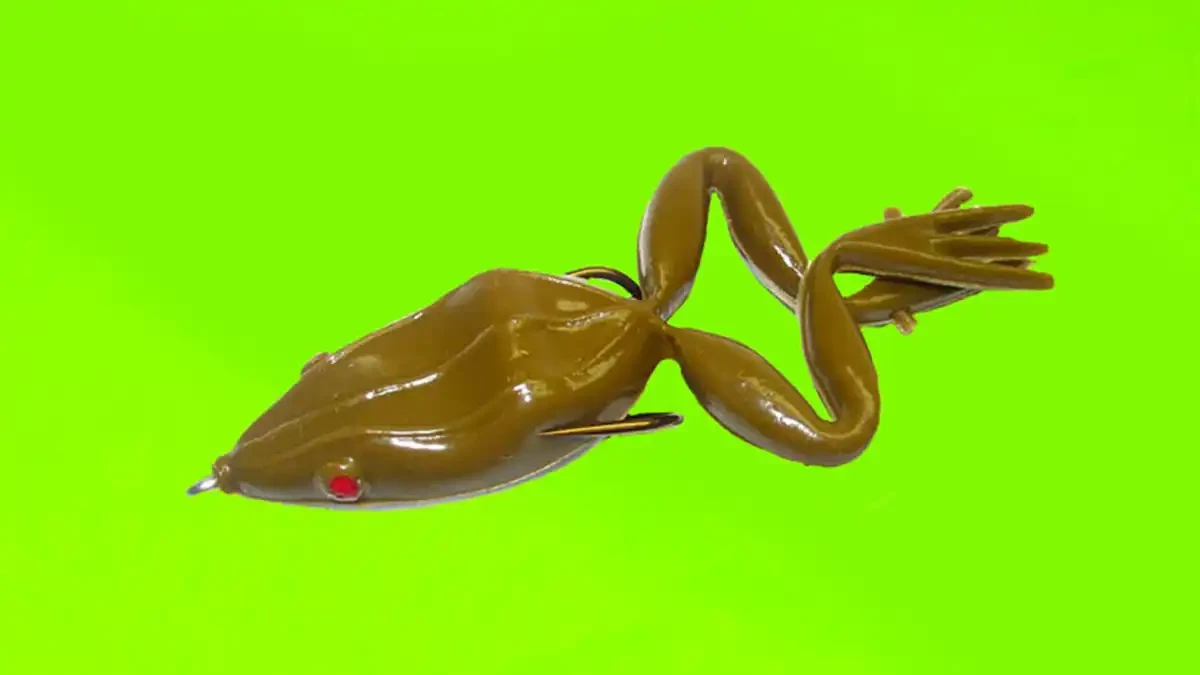
Hollow Frog: Snagproof Frog
Wanting to mimic frogs and fish them around dense, snaggy cover was a problem. Hard topwater baits could be made to resemble a frog but the exposed hooks meant the angler was constantly fighting with snags.
Enter the Snagproof Original Frog and what would become a staple of bass fishing around vegetation. With a unique two-pronged hook that was protected by flared sides and top, this hollow bodied soft plastic bait would collapse on the strike and hook a fish in heavy cover that no other lure could get through.
Check Out More Frog Reviews:
- Scum Frog Painted Trophy Series Frog
- Scum Frog Pro Series Frog
- Z-Man LeapFrogZ Popping Frog
- Z-Man Leap FrogZ Walking Frog
- Scum Frog Small Dog Review
- Strike King Popping Perch
- Megabass Big Gabot Frog
- River2Sea Spittin Wa Frog
- Teckle Sprinker Frog
- Booyah Pad Crasher
- Stanford Baits Boom Boom Frog
- Terminator Popping Frog
- Terminator Walking Frog
- Stanley Top Toad
- LiveTarget Hollow Bodied Field Mouse
- LiveTarget Hollow Bodied Frog
- Spro Bronzeye Shad 65
- Spro King Daddy Frog
- Spro Bronzeye Poppin’ Frog
MORE ALL TIME BEST BASS FISHING LURES
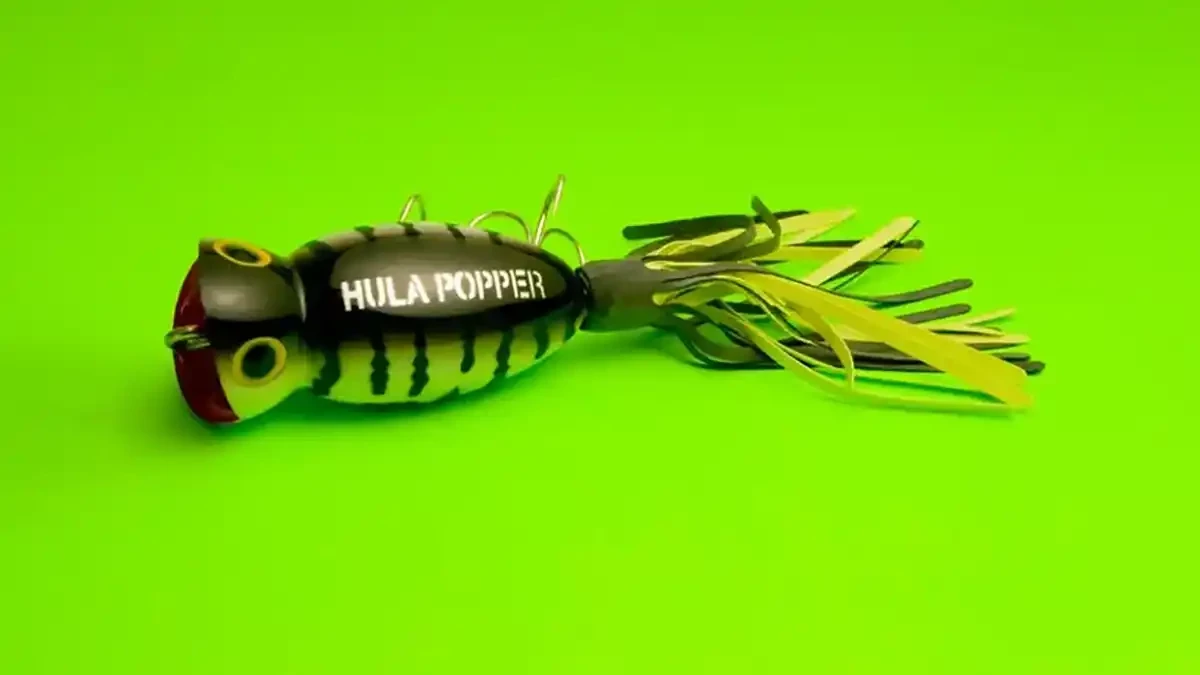
Popper: Fred Arbogast Hula Popper
People probably have a few of these in their tackle boxes. My dad had several that turned to a gooey mess over 20 years of rubber skirts melting in the trays of his expanding two-tower tray tackle box. Regardless, the Arbogast Hula Popper has had a long lasting impact on bass fishing lures.
It was the first widely market topwater popper hitting the market sometime in the 1930s. The chugging bait was made to imitate frogs around vegetation. The shape of the body, the frog coloration and of course the popping mouth were all innovative at that time, but it’s another part of the lure that really made the biggest influence.
Fred Arbogast is credited with developing the “hula skirt” for giving a lure a lifelike look and feel. This hula skirt lead to the development of spinnerbaits and jigs with these flaring rubber skirts for tempting fish to bite.
Today’s poppers are streamlined, finely detailed, and beautifully painted forage imitators with sharp hooks, weight transfer systems, rattles, feathers for added attraction and more. And we all have the Hula Popper to thank for the innovations and mainstream appeal of topwater chuggers, as manufactures continually seek to improve the original mouse trap.
But a popper is one of the best topwater lures around precise targets, when fish are shallow, especially around the spawn and post spawn periods and again in the fall when the bait is real small.
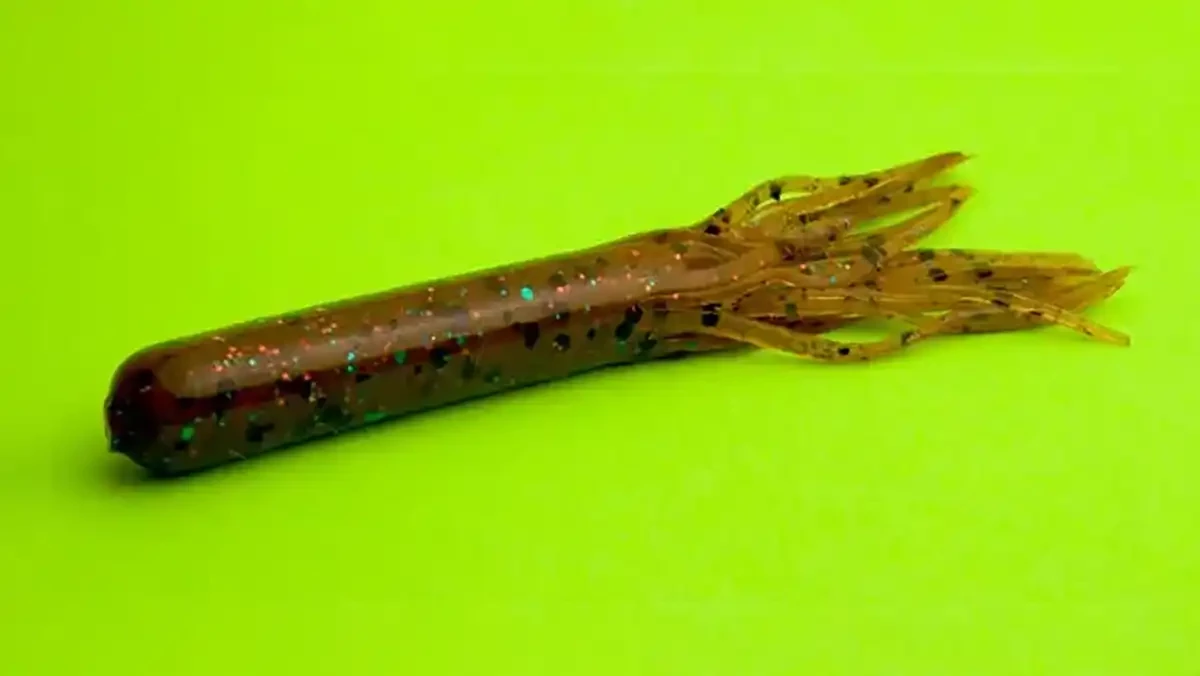
Tube: Bobby Garland Original Gitzit
In 1964, an odd-shaped hunk of plastic hit the market. And it didn’t make much of an immediate splash, but the guys out west sure did pick up on its effectiveness. Bobby Garland had created a “tube bait” he called the Gitzit that could mimic a dying bait fish as it fell to the bottom. This spiral of death action was irresistible to bass in clear waters out west. It was not only a great lure for smallmouth bass but it quickly became a great lure for largemouth bass and a great lure for spotted bass.
The Gitzit really became a household name when Guido Hibdon drew Garland in a tournament on Lake Mead. Hibdon brought the bait back to his Ozark lakes and started tearing up the tournament trail with this new shape of plastic. It was unique in that it broke away from the worm craw lizard (lifelike creature) mold and hollow body with tentacles. It was a blend of many great concepts in lure making and is what makes a tube still so effective today.
Nowadays you won’t hardly find a soft plastic line that doesn’t have some form of tubes in their line up. Their influence was massive. The tube has won numerous tournaments at the top level and it has so many variations on how it can be fished. Cast it on an inserted jighead, flip it on a Texas rig in brush, or crack em off the bottom on smallmouth fisheries to get aggressive smallies to bite.
Their effectiveness on smallmouth is something of bass fishing lore, not to mention all bedding bass just love this size bait. You can fish these on a Texas rig with a wide gap hook or a hook specifically for tubes. You can also insert a round ball jighead into its cavity and fish it on light line. So flipping and casting on a jighead are it’s too most common uses and both ways work well for bedding bass.
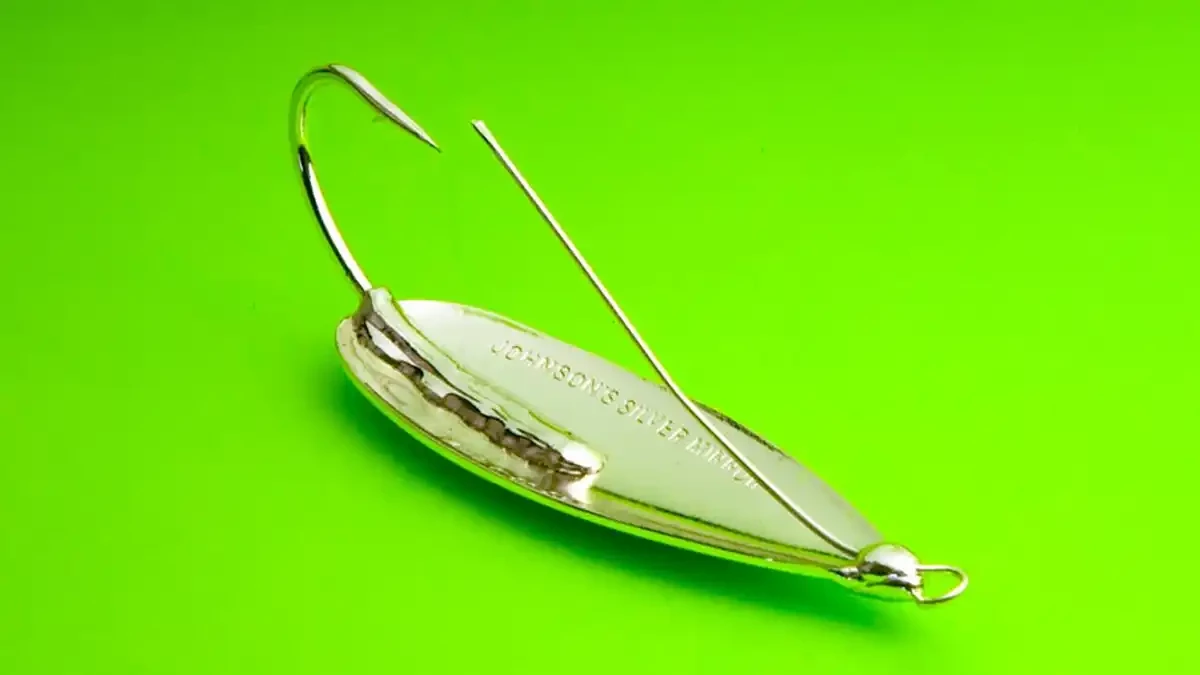
Spoon: Johnson Silver Minnow
The Johnson Silver Minnow is one of the simplest lures to stand the test of time. But when it hit the scene, it was one of the first and most effective ways to tempt bass to come to the top and eat around heavy vegetation. In fact we’d argue today’s modern frogs, toads and other scum rat type lures are derivatives of the Johnson Silver Minnow.
It came through the grass better than a spinnerbait or buzzbait. It didn’t get gnarled up in sloppy, slimy bogs, it had flash, wiggle and with a grub or worm a soft seductive side too. The total package for catching bass in heavy vegetation. Its effectiveness carried over to saltwater fishing in the marshes.
It’s still available, and still thrown by a lot of anglers in states like Florida and up north on grassy fisheries. Throw on a ribbon tail white worm trailer and cast and steady reel it through pencil reeds and bank grass for savage strikes. Because of this, spoons have become staples from top to bottom with their wobble and flash and this was the early precursor.
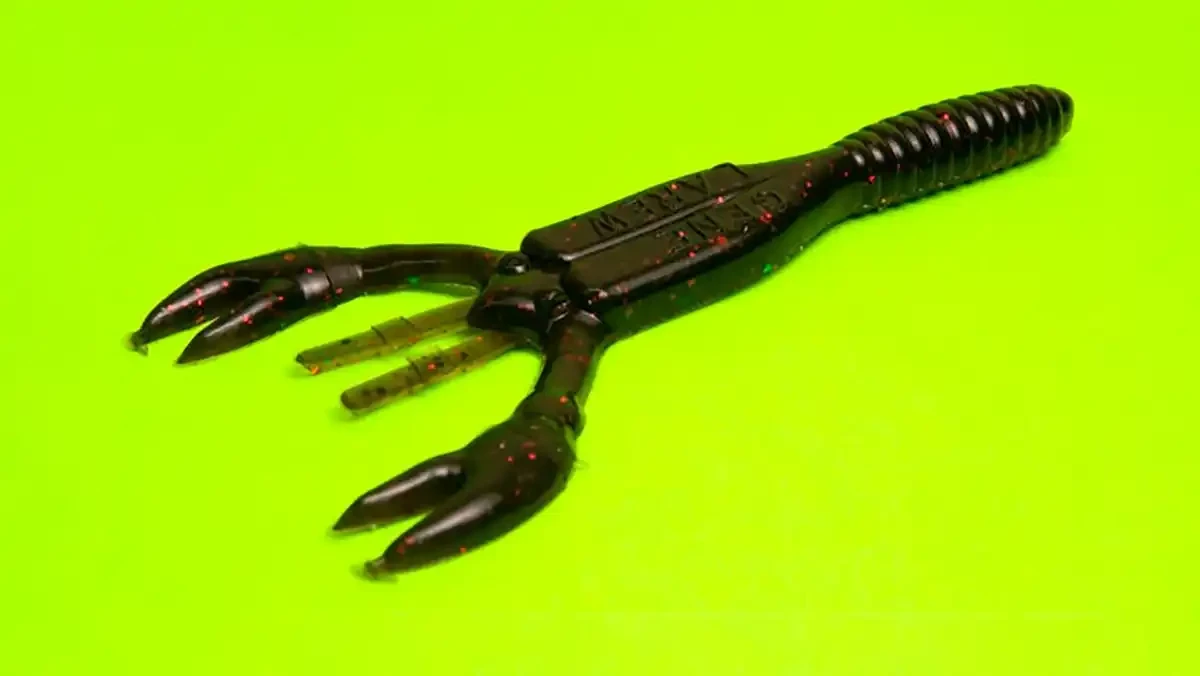
Craw: Gene Larew Salt Craw
It may not have been the first or the best ever made, but the Gene Larew Salt Craw has stood the test of time, won many professional tournaments and brought something into the forefront in manufacturing of soft plastic fishing artificials. This long hybrid worm / craw plastic offering was destined to turn a lot of heads from day one — both on the shelves and in the bushes.
Anglers were immediately attracted to the shape and profile. Its size made it a great jig trailer as well as a great Texas-rigged offering for flipping heavy cover. But the real innovation was the ability to cook salt into the plastic pours so that the salt was not just sprinkled onto the bait or in the bags (a process we find very annoying as anglers) but actually poured as part of the bait.
In fact for a time, Gene Larew held a patent on putting salt in baits by which companies like Zoom just paid royalties to put salt in their baits. The patent has since lapsed. This innovation, however, helped spur development of plastics and soft baits with scent and taste being added to the baits. This was a game-changing idea at the time and definitely helped the sales of the Salt Craw.
But make no mistake, the bait has caught some giant fish and proven itself in the biggest of stages in competitive fishing. And now soft plastic craws are a staple for bass fishermen everywhere.

Buzzbait: Lunker Lure Buzzer
This is one of those “started-it-all” lures in bass fishing. The Lunker Lure buzzbait set the standard for buzzbaits, and continue to be very popular today. The skirted topwater buzzer was a new twist on spinnerbaits for riding on top and churning up a commotion that attracted not only savage strikes, but larger than average bass.
Part of the allure was the buzzing blade tearing up a trail in the water, but the other aspect anglers grew to love was the “squeal.” The mouse-like chirp of the metal blade spinning on a metal wire was a very appealing draw for big bass.
The lure spurred other manufacturers to create buzzing offerings, trying to improve on the original, but the original still catches them just fine. A buzzbait is an often overlooked lure, but it still seems to win a major tournament or two every year and catches a lot of big bass in the post spawn and fall.
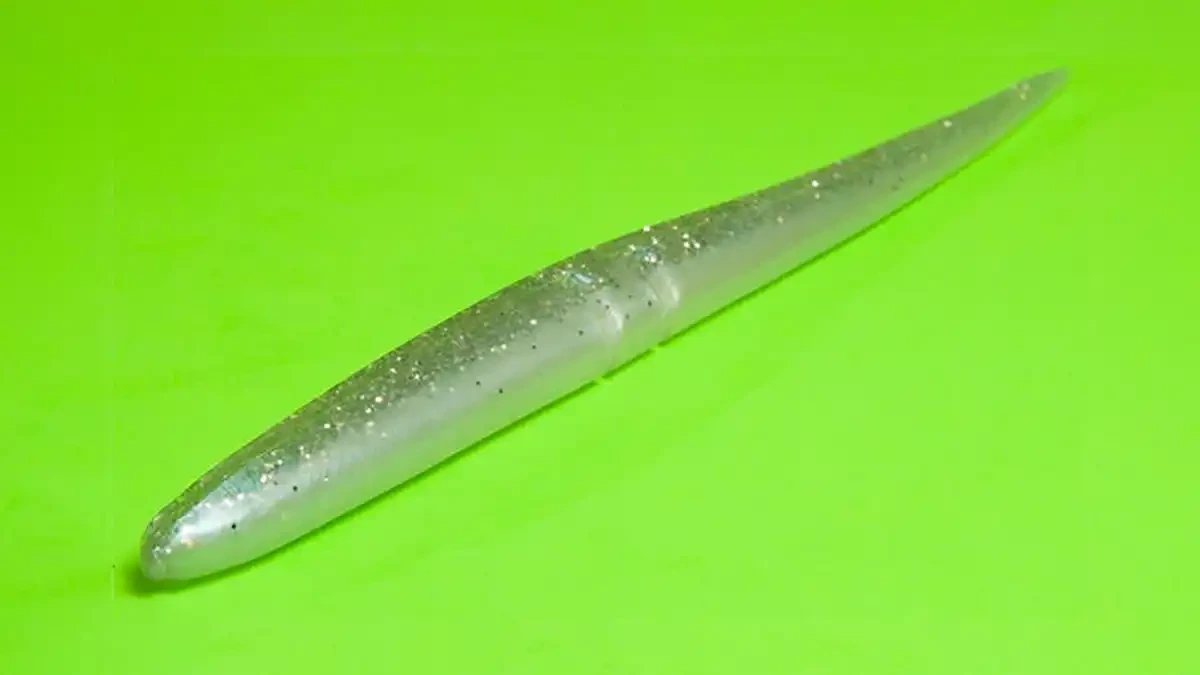
Soft Jerkbait: Lunker City Slug-Go
This straight darter shaped plastic really changed how plastics were viewed.
In our mind, there are two types of artificial lures from a fish’s standpoint. There are contact baits, and there are reaction baits. Lures like plastic worms and jigs are contact baits. They are subtle, act like prey inching along the bottom and the fish will nose up to them and study them before deciding to eat them.
Reaction baits on the other hand, shake, rattle and roll by the bass and often don’t give them enough time to weigh the pros and cons of striking. The bass just grabs the lure out of sheer instinct or anger. They react to the wild noise and action.
When the Slug-Go hit the market, it was the first plastic bait of its kind to change that generated reaction strikes. An angler could now make this plastic bait duck and dart and slow sink like a dying shad and elicit a “reaction” impulse from the bass. When the lure hit the market in the middle of the 1980s, it was a little slow to catch on and then it seemed like after a few tournaments were won on it, it became the hottest selling plastic on the market.
It spawned a whole class of soft jerkbaits that were eliciting a reaction up in the water column instead of locked on the bottom or right on top floating. Anglers were able to target bass in the middle of the water column more effectively with these plastics.
READ NEXT – Slug-Go: Tested and Reviewed
Check Out More Soft Jerkbait Reviews:
- Zoom Original Fluke
- X-Zone Whiplash
- Culprit Skinny Jerk
- Z-Man Pop Shadz
- Optimum Baits Victory Tail
- Zoom Salty Super Fluke
- Big Bite Baits Swimming Jerk Minnow
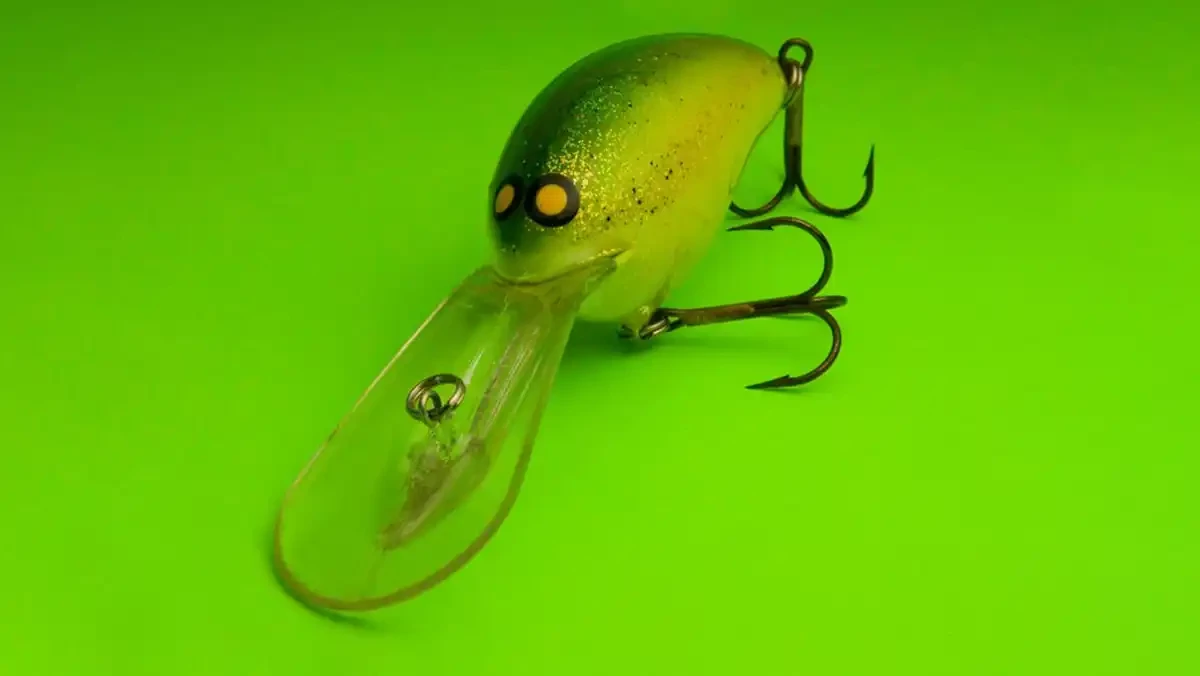
Deep Diving Crankbaits: Norman DD 22
When we first started compiling the list, we got a little spun out on how to really include some baits that not only influenced the tackle market and fishing patterns, but also stood the test of time. Some baits had a quick impact and then were gone. The Norman DD22 is one of those baits that has carried on and really lived up to the hype for more than 35 years.
The idea of getting a reaction bait down to fish deeper than 15 feet was no easy pill to swallow. And while the Norman DD22 may not have been the first to do it, it has done better than most for a long time and accounted for countless tournament wins at the local and national level alike.
This crankbait comes in a plethora of colors but is really simplistic in its design. It’s a bait that when it first hit the market, everyone had to have one. The mark of a true influential lure is its ability to make other manufacturers want to duplicate your success but continue to be the lure that anglers go-to for that application.
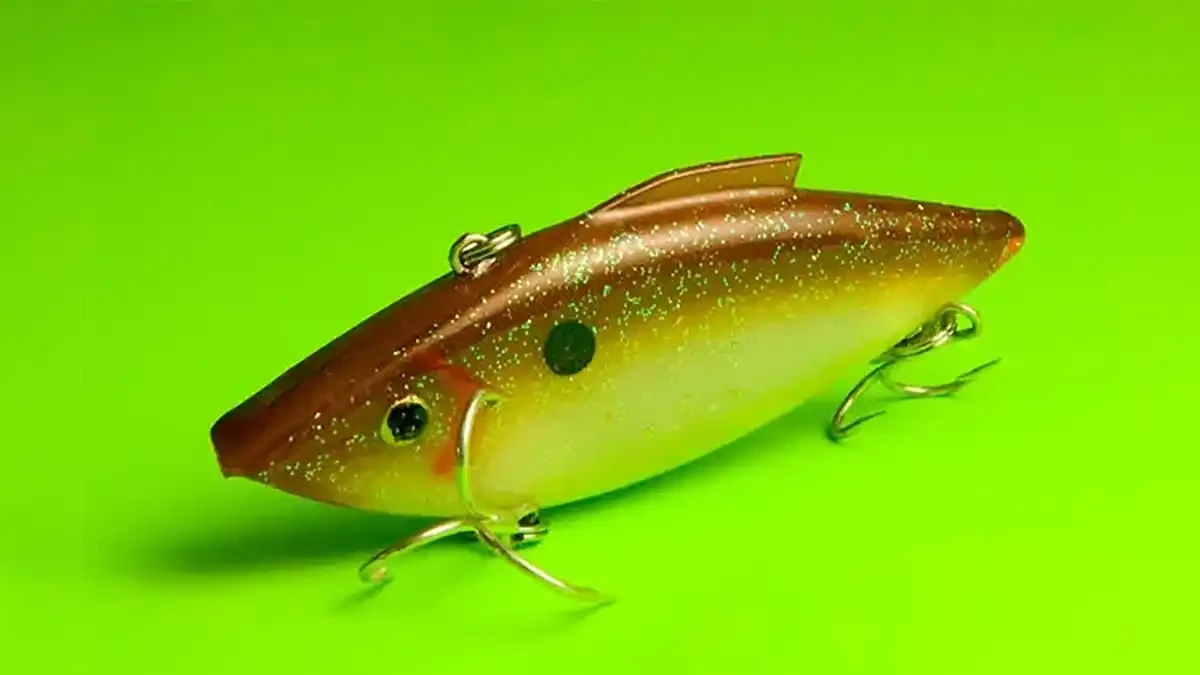
Lipless Crank: Bill Lewis Rat-L-Trap
What was there not to like about it? The name, the shape and even the sound when you shook it in your closed fist all were extremely appealing. Not to mention that plastic square case that it came in so you could get a good look at the bait.
Yep we were all hooked at our first sighting of the bait. Then when we finally got to fish the Bill Lewis Rat-L-Trap, we were even more excited. It could cast a country mile, it made a racket that you knew would rile up the weariest of bass and it just flat caught them.
The bait was a break from the norm of lipped minnow and round shaped baits. It’s profile was more like that of a natural shad and it’s subtle little wiggle and rattle combination was something new to the bass.
It spurred a new category of crankbaits called lipless crankbaits. It was an overnight sensation on the tournament trail and still catches fish for a multitude of anglers. It spawned all sorts of applications from ripping it out of the grass or yo-yoing it deep, or even burning it over the flats. It’s equally good around rock as it as around grass.
Check Out More of Our Top Crankbait Reviews:
- Team Ark Elite Z Series Lipless Crank
- Yo-Zuri Rattl’n Vibe
- Bagley Rattlin’ B Minus
- Storm Arashi Vibe
- Lucky Craft LV 500
- Bill Lewis Knock’n Trap
- Berkley Warpig
- Bill Lewis Floating Trap
- Duo Realis Vibration Tungsten Lipless
- Rapala Rippin Rap
- Jackall TN 60
- SPRO Aruku Shad
- Strike King Red Eye Shad
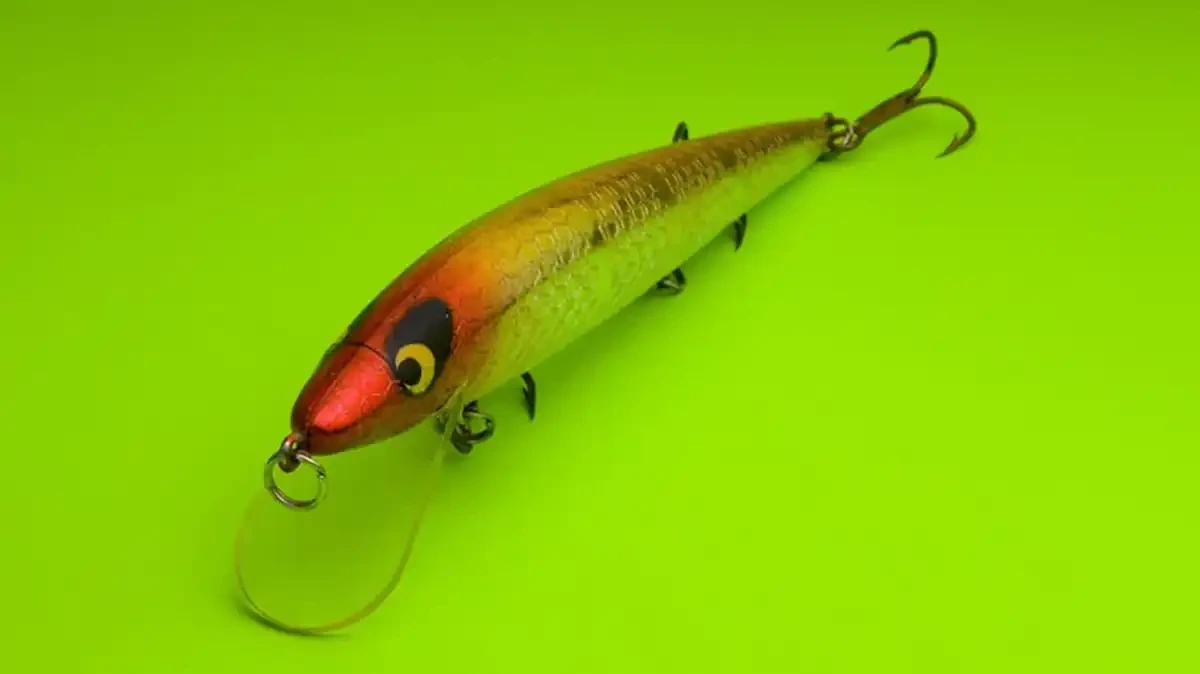
Hard Jerkbait: Smithwick Rattlin’ Rogue
The Smithwick Rattlin’ Rogue is responsible for a number of big wins on both the original floating model and the later suspending models. This is one bait that actually put suspending jerkbaits on the map even though originally they didn’t suspend.
Guys found out that by adding weight you could make the bait sit in a bass’s face in cold water and tempt them to bite when they were overly lethargic. Guys originally were weighting these with lead coil, rubber core sinkers, lead tape and more along with Bomber Long A’s, and Rapala Original Floaters. But it was the Smithwick Rogue that kept coming up when talking about producing winning stringers.
They may not have been the very first jerkbaits that suspended, but they oddly enough created the craze of suspending jerkbaits because of necessity and savvy anglers being handy with lead.
Check Out More Jerkbait Reviews:
- Yo-Zuri 3DB 100 Jerkbait
- Hardcore Minnow Flat SP
- Rapala RipStop
- Megabass Ito Vision Oneten Silent
- Megabass X-80 Trick Darter
- Megabass Ito Vision OneTen +2
- Lucky Craft Flash Pointer SP
- Lucky Craft Lightning Pointer XR
- Rapala Shadow Rap Shad
- Rapala Shadow Rap
- DUO Realis 110SP Jerkbait
- Megabass Ito Vision 110
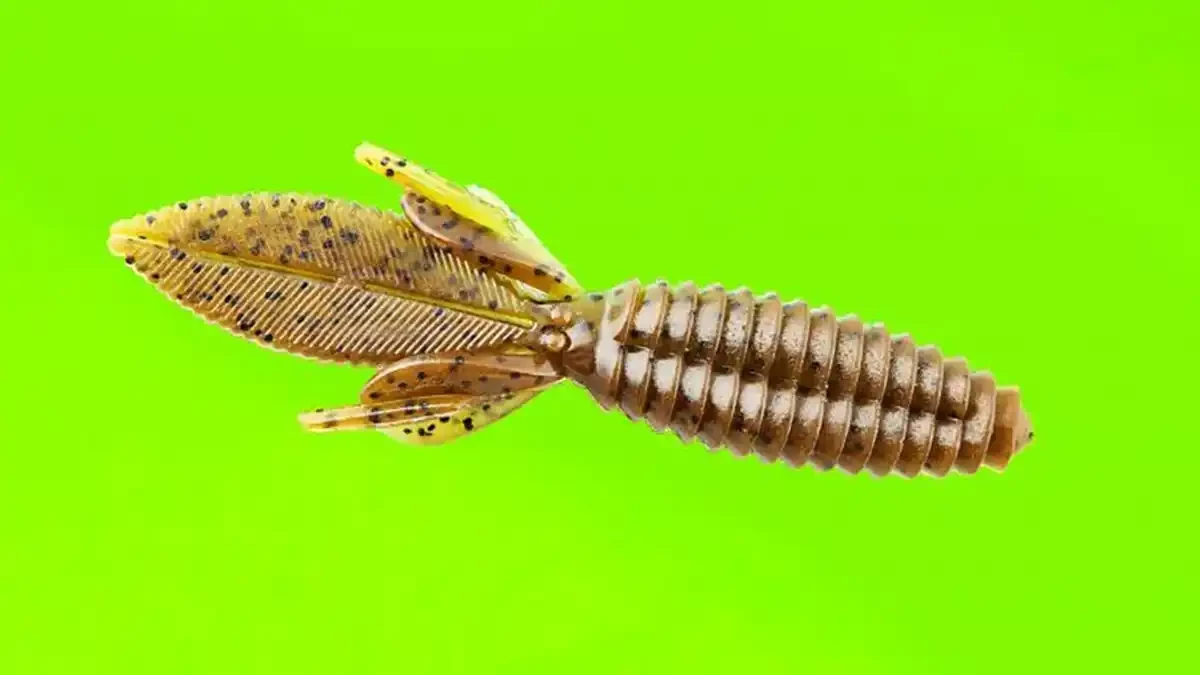
Beaver Bait: Reaction Innovations Sweet Beaver
Andre Moore was an up and coming professional tournament angler when he won an FLW Tour event on Beaver Lake with a wild homemade soft plastic he designed. This bait didn’t resemble anything in the water, but it did something special in the water because the bass could not, and still cannot, resist it.
The Reaction Innovations Sweet Beaver featured a ribbed body with a creased mid section, flapping appendages and a spade tail that can be split. It mimics baitfish, bluegill and crawfish all in one when flipped and punched through heavy cover and hopped around under matted vegetation and thick willow bushes alike.
It is a staple fish catcher from California to Florida and all though it’s not been around as long as many other creations on the list, it’s another one of those baits that spawned a whole new class of baits and presentations for bass in heavy cover.
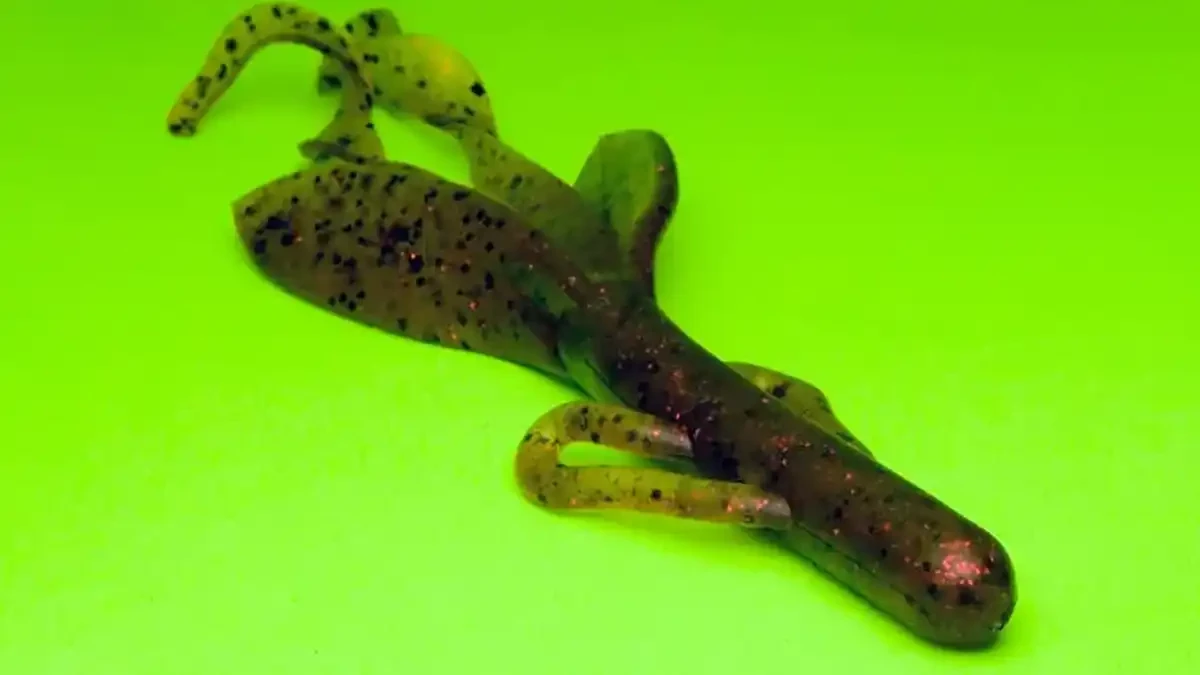
Creature Bait: Zoom Brush Hog
The Zoom Brush Hog was an iconic fish catching plastic immediately upon hitting the market. And it spawned a whole new category of soft plastics.
It’s an absolute staple from coast to coast in 2-inches of water to 50 feet of water. Fished on a Texas rig, a Carolina rig, a jighead or a jig trailer, this bait broke the mold on standard plastics. Before this bait, soft plastics had to resemble something that existed in the water. What spawned after it was a category affectionately called “creature baits.”
Before it there were lizards, craws, worms, tubes and grubs. After it however there was an explosion of soft plastics that didn’t resemble anything. And that category continues to expand in the soft plastic fishing lure world. It gives big bass a bulkier profile and a bigger meal. And still remains a dominant fish catcher throughout the year.
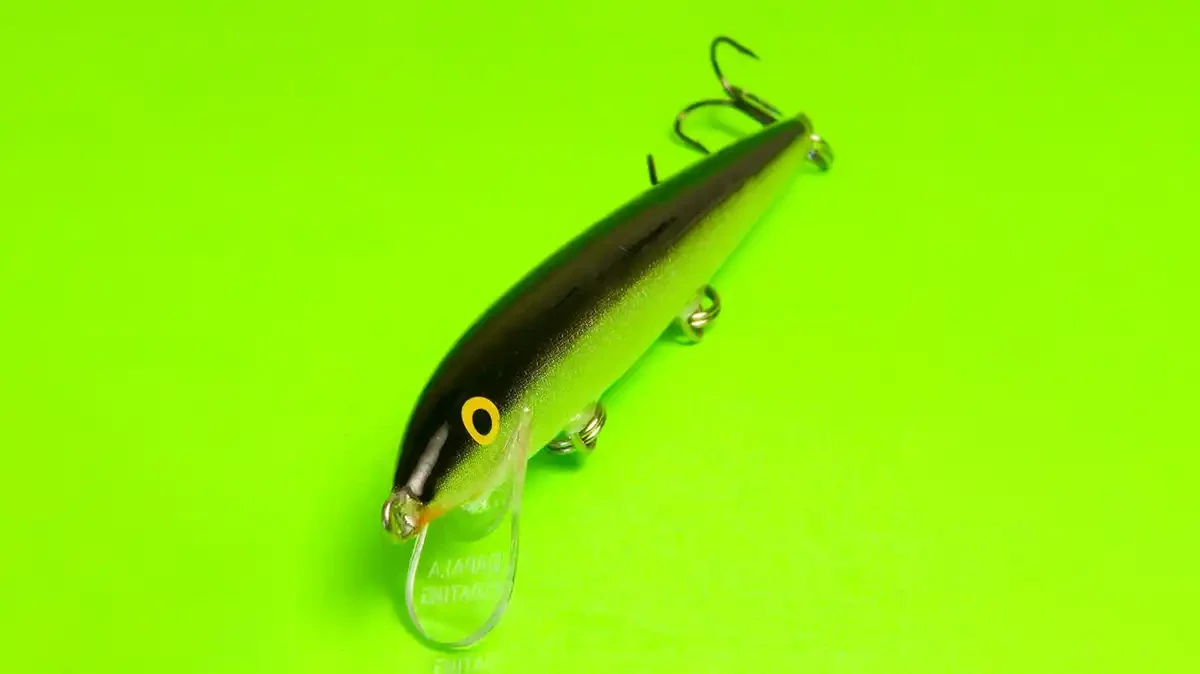
Topwater Minnow: Rapala Original Floater
The Rapala Original Floater pretty much started the entire Rapala company, and for a lot of folks, it’s where their first alternative to live bait came into play. The popularity of the bait was so incredible when it first came out that many anglers guarded the baits in metal cases to keep them protected.
The first Rapala Original Floater was hand carved by Lauri Rapala in 1936. It was made of cork, wrapped in chocolate bar wrapers that were sealed to the bait by melting photo negatives over it. His original works were reported to catch him 600 pounds of fish on good days. That reputation grew and soon every angler was demanding Lauri’s carvings.
The fact that the bait has stood the test of time for some 75 years is an obvious reason to put it in the Top Five Most Influential Bass Fishing Lures. But it’s much more than that. The hand tuned precision and effectiveness of this lure really set the benchmark for all fishing lures after it. It was basically the bar that other manufacturers sought to reach in the early days of bait building.
Now the reputation that was built by this one lure sells 20 million products yearly for this company and tens of millions more should probably thank this one creation for making artificial lures more mainstream.
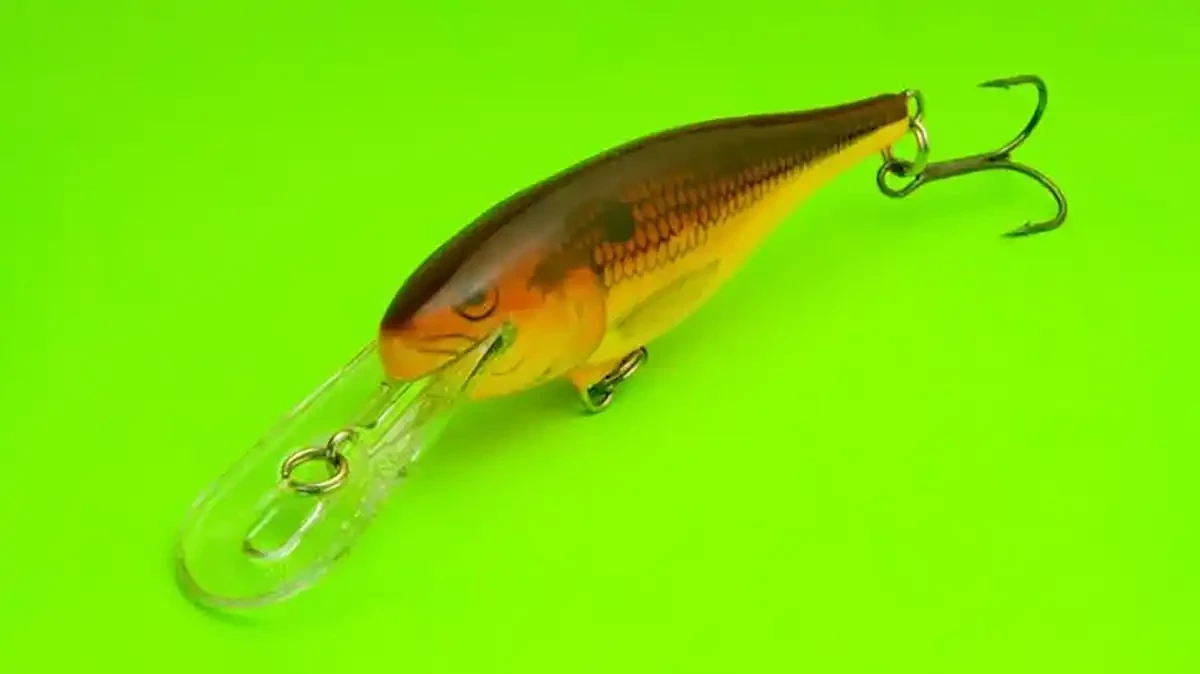
Coldwater Shad Crank: Rapala Shad Rap
The bait was made in 1982 to improve on predecessors offerings. It was designed to closely mimic baitfish profiles with good buoyancy, straight subtle tracking and castability. And there have been more than 3 million Shad Raps sold in various colors and sizes and variations. And it gave anglers a way to cover water in cold weather.
This bait made throwing finesses crankbaits on light line and spinning tackle en vogue on the tournament trail when the water was cold and the bass were sluggish. Most pro and weekend anglers alike still reach for a Shad Rap when fishing coldwater. It’s a confidence factor for tough coldwater fishing.
But the bait works in a variety of situations and works really well for a variety of species. It’s a staple in the walleye world, and we’d argue that four colors account for the majority of the Shad Rap sales. Those would be Silver, Gold, Firetiger and Crawdad.
For a time this bait was rented out by guide houses up north because it was so productive when it first hit the market, and the supply was so limited. The Shad Rap continues to sell extremely well year after year.
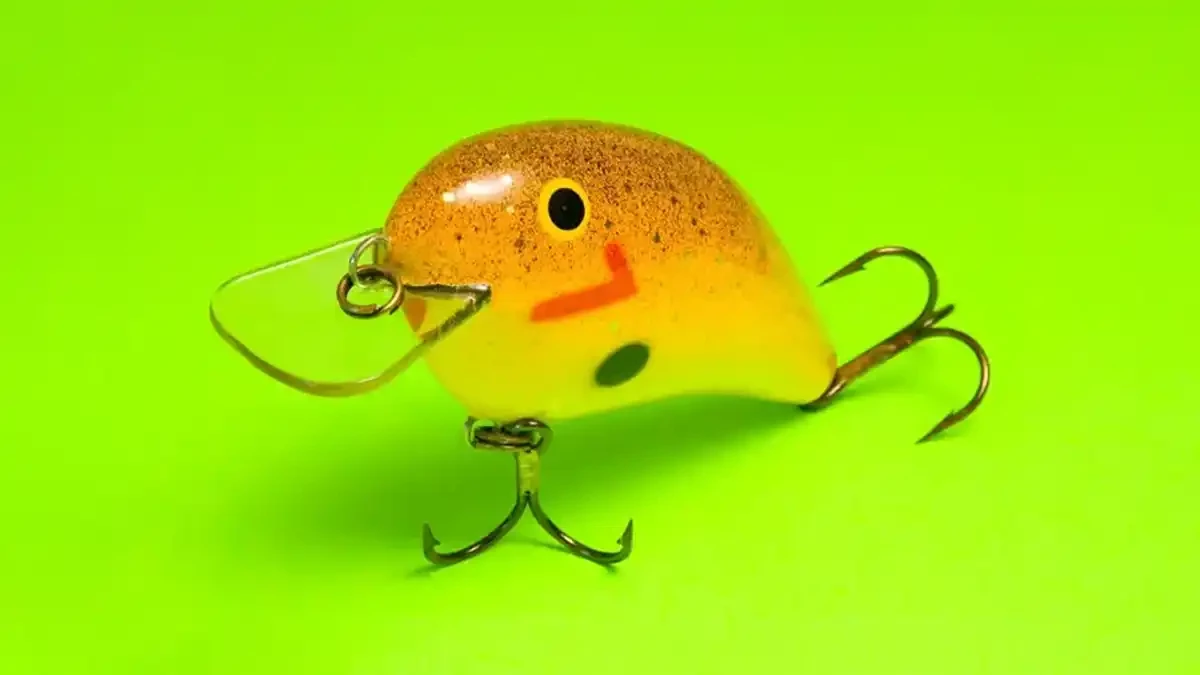
Square Bill Crankbait: Fred Young Big O
Hardly anyone talks about square bill crankbaits anymore. Okay that was obviously a joke. It’s all you hear about anymore when it comes to shallow crankbaits. KVD won a Bassmaster Classic on one and several other major tournaments have been won on square billed crankbaits since. Some folks think they were just created in the last 10 years, but the credit actually goes to Fred Young when he started hand carving his Big O back in 1967. That’s right it’s 55 years old.
His hand carved crankbaits were an immediate success and in great demand for years. He would hand carve and hand paint each bait and at the time, no two baits were alike. It wasn’t until Cotton Cordell took over that the bait was more readily accesible to anglers. However it was also changed to plastic at that time.
The original Big O set the bar for shallow balsa baits. It could walk through cover and deflect off rocks and hard bottoms like no other bait before it. So it was immediately popular with avid anglers.

Skirted Flipping Jig: The Arkie Jig
We’re not sure if Bob Carnes knew what he had immediately when he created the Arkie Jig. But we do know what he had was something incredibly special to bass fishing. Carnes was building baits in Arkansas and was looking for a way to make jigs more weedless and attractive to bass. He thought if he could make a balanced head for his bucktail jigs and add a brush guard to protect the hook he could fish his jig in more places.
He saw a TV show where they were using a jig with a fiberguard. At the time he was looking at wire guards for his jigs but the demand for the fiberguard after that TV show aired forced his hand, and he had to figure out a way to mold a fiberguard into leadhead. All the while he was tweaking on the shape of the head to keep it from snagging. It started more like a banana head, then he shortened it and flattened and widened it to make keep it level and upright which was critical to avoiding snags.
Once he got the jighead design and fiber guard correct he began tying the first jigs with bucktail. But he saw the Gilmore Lure Company Spinnerbait had some sort of rubber bands hanging off of it. He wasn’t sure what it was exactly or even how to get a hold of the rubber. He knew underwear had elastic in it as did women’s girdles. They actually traced the girdle’s rubber back to a rubber company and got them to color some rubber for them.
The rest as they say is history, but the lasting effect of some simple necessity has continued for more than 50 years. A skirted snagless jig has arguably won more national tournaments than any other lure. There for a time in the 80s, every tournament of any significance was being won on them. In the early days of the B.A.S.S. Tour, there were something like five tournaments in a row won on Carnes jigs and no one told anyone. They were keeping it secret.
Bo Dowden won the Classic in 1980 on a brown and orange Arkie Jig and the boom for Carnes’s snagless jig was going full steam ahead. The jig was carried in Walmart Stores in the early 70s when it was still just a regional chain. And after word spread and Walmart grew, access to his Arkie jig was much easier.
Now just about every jig manufacturer and component shop carries the Arkie style head for flipping. It was a lasting innovation that is every bit as good today as it was 50 years ago. The Jig is arguably one of the best lures for largemouth bass and easily one of the most versatile.
Check Out More Skirted Jig Reviews:
- Freedom Tackle Football Jig
- Nichols Lures Skipper Jig
- Jewel Baits Pro Spider Jig
- Strike King Hack Attack Fluoro Flip Jig
- Z-Man CrosseyeZ Flipping Jig
- Bill Lowen Finesse Flipping Jig
- Buckeye Balling Out Jig
- Strike King Tour Grade Skipping Jig
- V&M Flatline Football Jig
- Greenfish HD Flipping Jig
- M-Pack Lures Football Jig
- Missile Jigs Mini Flip Jig
- Strike King Structure Jig
- Buckeye Lures Mop Jig
- Cumberland Pro Caster Jig

Plastic Worm: Creme Wiggle Worm
Thanks to the Nick and Cosma Creme melting some plastic on their stove in 1949 and pouring it into some molds, we all have all these great soft plastics and other soft baits to fish with for bass. A plastic worm is probably the single most effective lure for catching bass that exists. And it all started with a wild idea in a kitchen.
The Creme Wiggle Worm started the entire soft plastic sub section of the fishing tackle industry, and its impact was immediate. The first packs were five worms to a card for $1 and they were sold by mail.
When they showed the product at the Cleveland Sportsmen’s Show in 1951, the distributor sold 9,600 packs in just a few days, and the boom for soft plastics had begun.
Not only did Nick Creme give us the Wiggle Worm, but he also was one of the first to use “national field staff” to test his worms and introduce them to other anglers. A successful business venture that still works today in the bait business.
The Creme Scoundrel became their best-selling soft plastic for a time. It was originally sold as a pre-rigged worm and many of us learned to fish a worm as children on this rig. The Wiggle Worm is no longer available but the Scoundrel is still a very popular worm when bass are shallow in the Spring.
The success of Creme’s soft plastics really elevated fishing tackle and made it a viable business for a lot of folks. This one innovation moved fishing tackle forward more than any other in our estimation.
Not to mention a worm can be fished so many ways now that it’s arguably the most versatile lure a bass angler can use. A plastic worm can be fished on a Texas Rig, Carolina Rig, Tokyo Rig, Wacky Rig, Drop Shot Rig, Neko Rig, Chicken Rig and Free Rig as well as other experimental rigs.
Best Lures for Largemouth Bass
Of this list a handful of these have proven to still be the best lures for largemouth bass. Generally speaking we would list the following as the current best lures for largemouth bass:
- Yamamoto Senko
- Z-Man Chatterbait
- Plastic Worm
- Bass fishing jig
- Spinnerbait
- Walking Topwater
- Swimbait
With those 8 lures you can cover most of bass fishing. A plastic worm is versatile and can be fished anywhere. When bass are shallow in the spring or in clear water, you will find it hard to beat a Yamamoto Senko. It’s natural profile and action are irrestibale to largemouth bass coming shallow to feed and spawn. Likewise the Chatterbait and Spinnerbait are great for covering water year round.
We’ll go with the spinnerbait in dirtier or deeper water and the Chatterbait around vegetation and clearer water. A jig works year round and can be fished in inches of water flipping or out in 30 feet of water drug on the bottom. And finally for the best and most thrilling action, a topwater lure is hard to beat. Whether it be a frog, a buzzbait, plopper, a walker or a popper, topwaters offer a very visual and exciting way to bass fish for largemouth bass.


